“X-Men: Evolution”: 25th Anniversary Retrospective
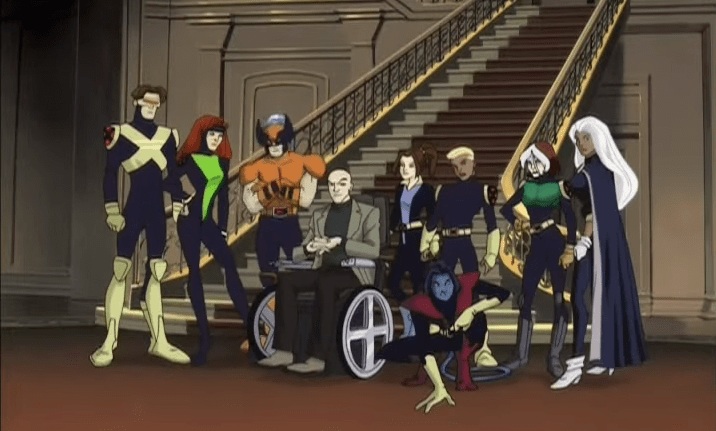
The year is 2000. The X-Men have enjoyed an incredible decade of multiple high selling comic book titles and a critically acclaimed animated series that lasted many seasons. But things began to wind down for Marvel’s Merry Mutants and, like all things superhero, it wasn’t time to go away. It was time to evolve.
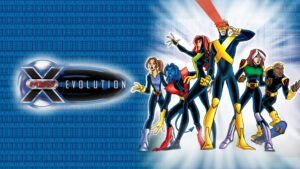
Fortunately, action and special effects in movies had finally caught up to superheroes, and they were headed to the big screen. Bryan Singer’s first X-Men movie made a splash at the box office the summer of 2000. The X-Men comic books may have had to re-shuffle a bit to move out of the 90’s, but they were already preparing an updated comic book series with fresh continuity and a modern perspective in Ultimate X-Men (which would launch in February of 2001). The other piece of the puzzle for X-Men to thrive in the 2000’s was to have another hit cartoon show. And they certainly delivered with X-Men: Evolution.
This new X-Men cartoon couldn’t have been a retread of X-Men: The Animated Series. That show had only ended three years prior, and it was more of a reflection of a specific period of late 80’s/early 90’s X-Men history. X-Men: Evolution knew what characters and themes would be ever-present with the X-Men (and would be popular in the movie franchise), but it took a leap of faith by going back to the basics and making the X-Men a team of adolescents just learning how to use their mutant powers. Even with the original X-Men in the comic books having grown up, there were always a second book of younger teen mutants like New Mutants or Generation X. So having a teen cast wasn’t a radical idea, but putting them in an actual high school alongside humans who didn’t know their secrets was.
“Strategy X”, the pilot episode of X-Men: Evolution, premiered on Kids’ WB on November 4th, 2000. Season one of the show was a slow build. Scott Summers/Cyclops and Jean Grey/Never called Marvel Girl nor Phoenix were the only students living at Xavier’s Mansion. Storm and Wolverine (who were never teens in the comics) were the only teachers alongside Xavier, and Kurt Wagner/Nightcrawler was introduced. The students would learn how to harness their mutant powers at Xavier’s while learning other things, including living among humans, at Bayville High School. Mystique was in disguise as the school’s principal, and season one became a race to recruit mutants for either Xavier’s X-Men or Mystique’s Brotherhood of Mutants. Episodes introduced Kitty Pryde/Shadowcat and Evan Daniels/Spyke to the X-Men and Todd Tolansky/Toad, Lance Alvers/Avalanche, Fred Dukes/Blob, and Pietro Maximoff/Quicksilver to the Brotherhood. Rogue was initially a Mystique recruit, but she was the only one to switch sides. The season ended with Magneto pitting the teams against each other.
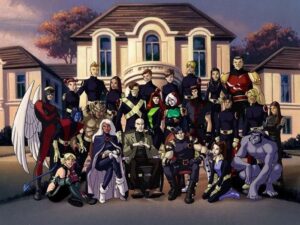
X-Men: Evolution went on to expand the concept of the show along with the cast. Half a dozen New Mutants were added to the school while Beast was brought on as another teacher. Magneto would go on to recruit older and more powerful mutants as his Acolytes (with the Brotherhood oscillating between supporting characters and antagonists on the show). The biggest obstacle the X-Men would have to overcome was being exposed as mutants to their Bayville classmates. This is where the show really kicked into high gear. What began as a good mutant vs. bad mutant show with teen hi-jinks sprinkled in became a show about superheroes who looked after their own kind while dangers were all around them. It fulfilled the idea that the X-Men have to protect a world that hates and fears them. This is where introducing human students and turning comic book Senator Kelly into Principal Kelly for the show paid off. We got to see real and painful reactions of humans to finding out their friends were mutants. X-Men: Evolution wasn’t about time travel, alien empires, or mutants on a global scale. It was smaller but more personal. Every season upped the stakes, there were more poignant episodes, and the series ended with the biggest threat possible, the ultimate mutant Apocalypse.
Taking a ground level approach to the X-Men we’re familiar with ended up being one of the show’s strengths. Scott and Jean struggled with being leaders in their community while their romance bloomed. Kurt and Kitty moved past their more comedic traits and Spyke, well, I’ll get to him in a minute. Rogue was perhaps the best developed character on the show, and she did it without being the ultra strong Southern spitfire the audience is used to. She was a withdrawn goth who had to learn not to fear her powers and begin to trust the right people. Even the Brotherhood were done justice. They could never become full fledged X-Men (despite Avalanche trying in one episode), but they weren’t villains either. They had their own struggles being mutants and believing they were at the bottom of society, but their bond turned them into a true brotherhood as they realized they will always have each other’s backs.
X-Men: Evolution wasn’t without its drawbacks, of course. The cast was younger, and the show skewed to a younger demographic than the movie or even X-Men: The Animated Series did. That meant less impressive fight scenes. Some of them were downright silly, like when Quicksilver fights Nightcrawler by putting ridiculous looking clothing on him at super speed. It’s great that the ever-popular Wolverine wasn’t front and center on this show, but they were never going to show a really intense fight with the guy whose main attack is to cut his enemies with claws. Wolverine (and Storm and Beast) in general was kind of on the sidelines simply because he was one of the adults on the show.
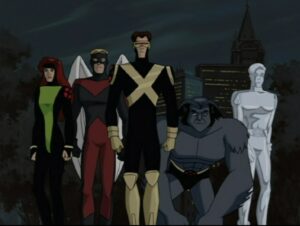
Expanding its cast was always the right move, but it did oftentimes suffer from having to juggle too many characters. Spyke was the biggest casualty of this. One of the two characters created for the show, Spyke was there from the very beginning. He was Storm’s nephew and had powers like the comic book character Marrow, but otherwise, he was a blank slate. They could’ve done anything with him, and they did indeed take an interesting twist by having him leave the X-Men and join the Morlocks, but he ended up getting less and less screentime. As Spyke faded from the main cast, Iceman (who could’ve easily been a main character from the start), rose in prominence. He was introduced as one of the New Mutants, but most of the others just became background characters. Wolfsbane or Berserker would be in several episodes, but they wouldn’t get any lines. Boom Boom was another new mutant who got an arc (sort of the reverse of Rogue, she left the X-Men for the Brotherhood), as did the Scarlet Witch, a later introduction to the Brotherhood. Colossus and Gambit were brought in working for Magneto, but we never got to see them become the heroes we recognize them as. Arcs got cut short, and the show simply didn’t have enough time or episodes to properly showcase all the characters they introduced.
The show may have failed Spyke, but it did a decent job with another new character. X-23. Wolverine wasn’t turned into a teenager for X-Men: Evolution, but we got the next best thing. A teenage female clone of Wolverine was just as unstable as he could be, and she just as rough a struggle against her animal nature.
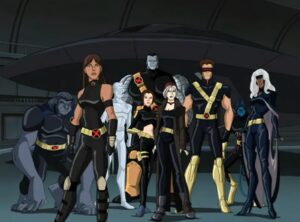
X-Men: Evolution’s flaws may have become glaring in later episodes, but the show never actually dipped in quality. There were strong episodes every season. Season one gave us “Turn of the Rogue”, where Rogue finally joins the X-Men. The season two premiere “Growing Pains” completely changed the show’s status quo by exposing the mutants’ secret. “The Stuff of Heroes” had the X-Men learn to operate as a team without Xavier’s specific guidance and “Self Possessed” showed the consequences of Rogue’s power in season three. Season four’s two-part series finale “Ascension” wrapped up the stories for a lot of characters while hinting at a future that will always have conflict but nevertheless remains bright for the X-Men.
So what legacy did X-Men: Evolution leave? While many new interpretations presented in X-Men: Evolution never carried on in other forms, it did give us X-23, who was adapted into the comics and saw a live action version in 2017’s Logan. X-Men: Evolution may not be the most popular thing to come out of the X-Men franchise, but 25 years later, it does hold up as a cartoon that was unique and did justice to many of its characters. Fans remember it fondly, and it makes a great introduction to newcomers to the X-Men who want to check it out on Disney+.
The post “X-Men: Evolution”: 25th Anniversary Retrospective appeared first on Anime Superhero News.
